Surgical Visualization of Arteriovenous Malformations (2011)
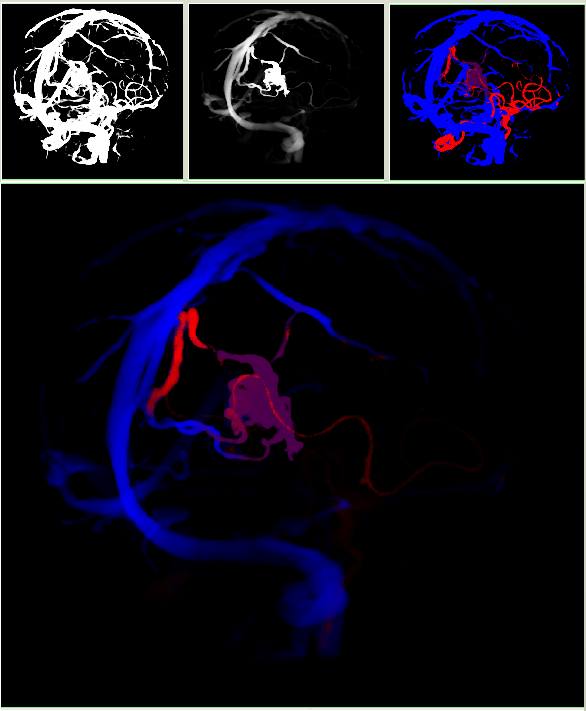
Cerebral arteriovenous malformations (AVM) are a type of vascular anomaly commonly treated by surgical clipping of feeding and draining vessels prior to resection. However the interpretation of the static angiographic images, or the determination of which vessels to clip, can be challenging even to experienced surgeons aided by conventional image guidance systems. We introduced a visualization method based on image processing using level-set front propagation to (1) enable blood flow visualization in static images, to (2) explicitly colour label the AVM feeding and draining vessels, (3) declutter the displayed image using vessel topological distances, and (4) display the proposed visualization intra-operatively to the surgeon using augmented virtuality. PDF
Anatomically Realistic Brain Phantom (2010)
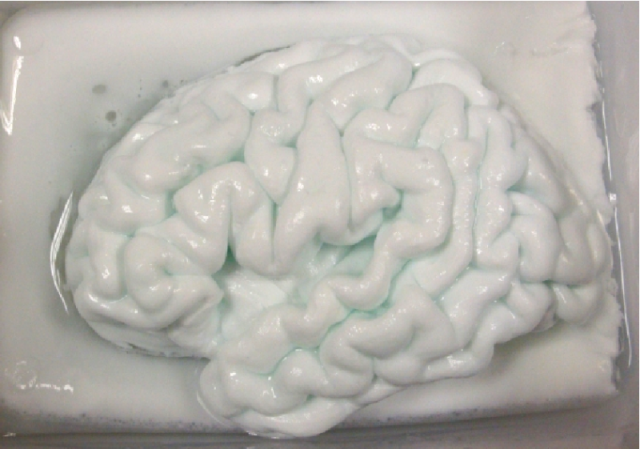
Technique validation is a crucial step in medical image processing in characterizing of novel algorithm. To validate my own algorithms, I developed an anatomically realistic brain phantom using poly-vinyl alcohol cryogel (PVA-C), which can be effectively imaged in magnetic resonance, computed tomography and ultrasound imaging modalities. The PVA-C phantom is also similar in texture to live human brain, deformable, and can be used for the validation of non-linear registration algorithms. The acquired multimodal images of the phantom are given freely to the wider image processing community and can be downloaded: http://pvabrain.inria.fr PDF
Hybrid Doppler Ultrasound Vessel Registration Algorithm (2009)
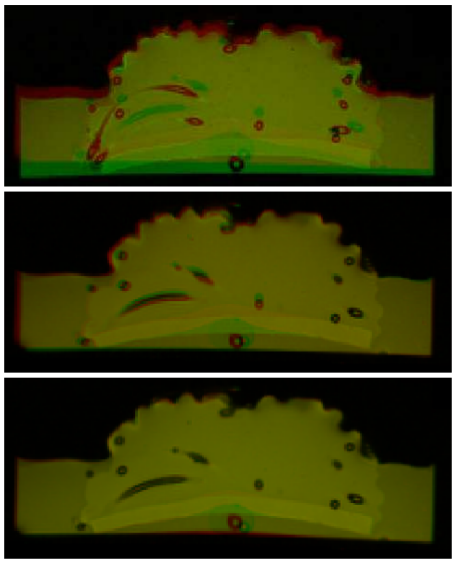
I developed and validated a novel hybrid nonlinear vessel registration algorithm for intra-operative updating of preoperative magnetic resonance (MR) images using Doppler ultrasound (US) images acquired on the dura for the correction of brain-shift and registration inaccuracies. Our hybrid feature and intensity based registration uses minimum preprocessing to roughly extract vessel features from raw volumetric images. This prevents the removal of important registration information and minimizes the introduction of artifacts, while reducing required computation. We then completed 3 rounds of validation for our vessel registration method to verify robustness and accuracy using (i) a synthetic data generated with our US vessel simulator, (ii) a physical brain phantom, and (iii) real clinical data. PDF
View-aligned Volume Rendering (2005)
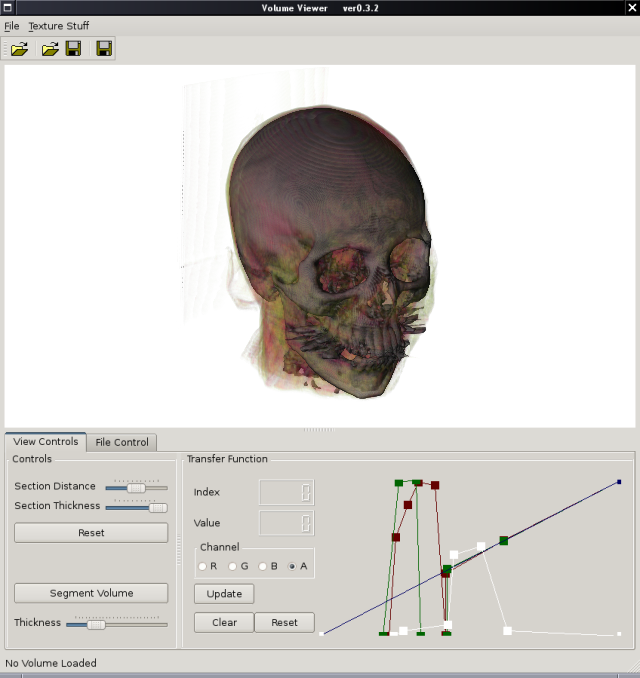
While working as a research associate with Dr. Randy Ellis at the Medical Computing Laboratory of Queen’s University, Canada, I developed a view-aligned texture mapped volume rendering program.
The program allows for the interactive editing of the volume rendering transfer function and can also accept of custom shader programs. It can be used for the visualization of multiple pre-registered 3D medical image data-sets. The program has since been used in several research projects resulting in publications.
Multiscale Document Image Segmentation (2003)
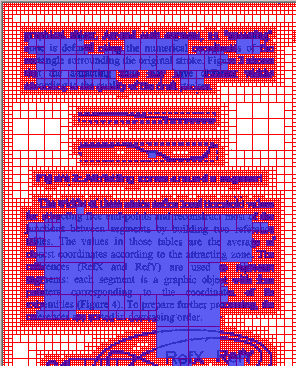
My Master’s thesis was supervised by Dr. Dorothea Blostein of the Queen’s University School of Computing and focused on the design of a multiscale document image segmentation method inspired by biological visual systems.
Many document image recognition and segmentation algorithms rely on domain-specific information (e.g., the type of document, format of document fields) in order to successfully partition the document text into separate parts for optical character recognition. The developed algorithm can achieve fast and accurate image segmentation using a minimal set of image domain assumptions, with results that were optimal when compared to other more complex document segmentation techniques.
Hand-Drawn UML Diagram Recognition (2001)
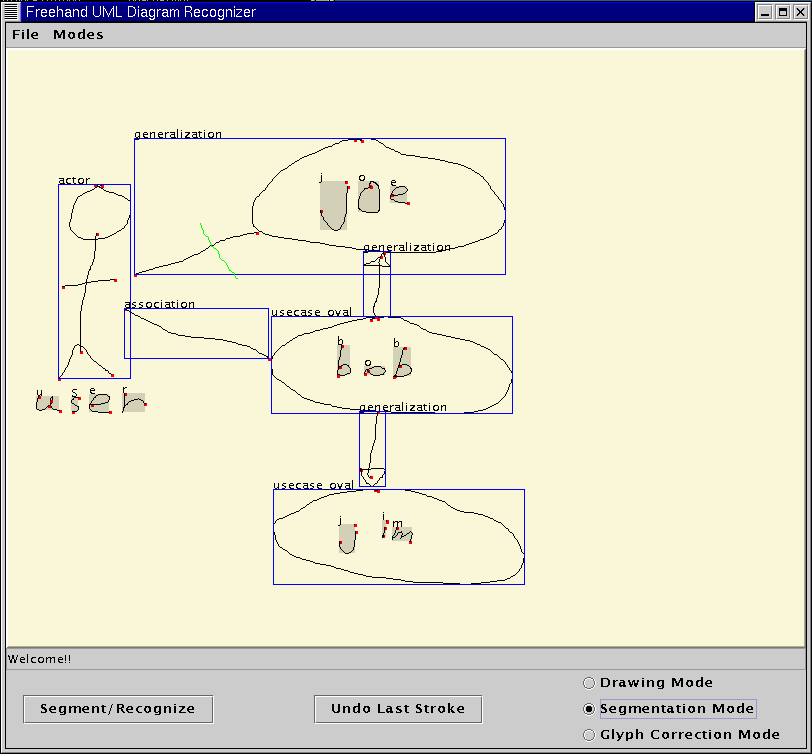
For my undergraduate thesis project, I worked on the implementation of a real-time recognition system for hand-drawn Unified Model Language (UML) diagrams. These diagrams are used in software engineering for communicating design ideas and reducing human errors, but most tools used form creating them have long learning curves and are difficult to use. The project resulted in a pattern recognition software tool that simplifies UML diagram creation and can be easily integrated in the software design process.
